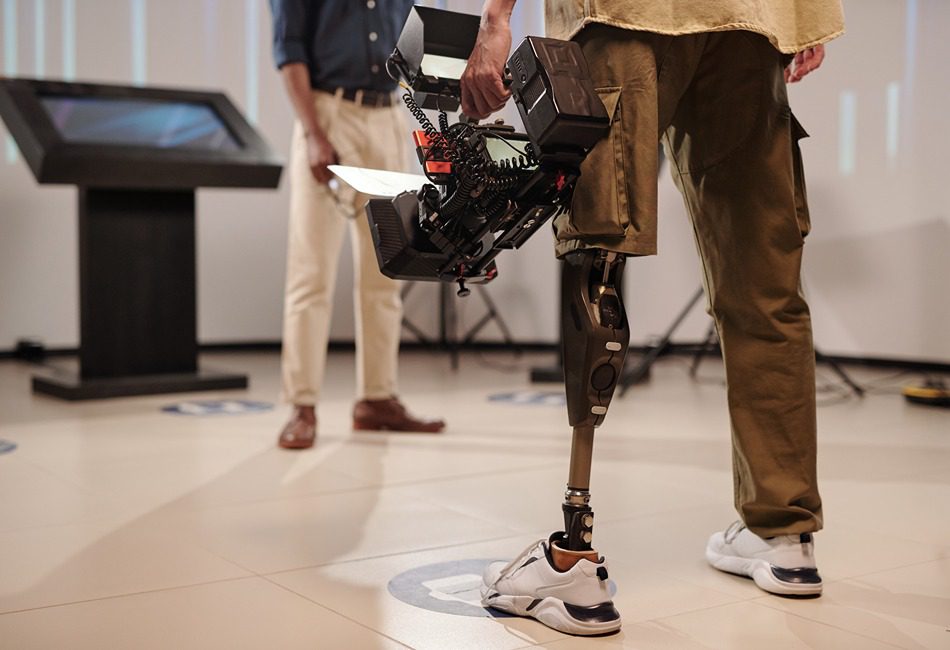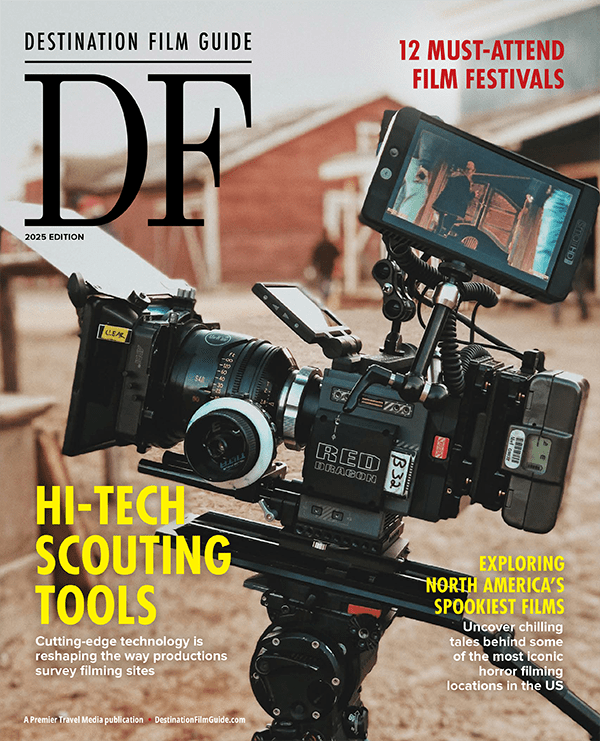Discover how to identify accessible filming locations to ensure equal participation and avoid costly retrofitting during your production
Lights, camera, action! It takes a team to create a phenomenal film. But what happens when someone on that team can’t do their job because of narrow stairs, tight doorways or a lack of accessible restrooms? That’s where ADA-compliant filming locations become essential when scouting your next project’s backdrop.
The Importance of ADA Compliance in Film Production
Under the Americans with Disabilities Act (ADA), all public accommodations must provide equal access for those with disabilities. That includes ramps, elevators, signage, and restrooms, and these laws also apply to film set locations. ADA-compliant filming locations help build accessible film sets where everyone—from the cast and crew to food caterers and guest viewers—can perform their duties free of risk from physical injury, barriers or complications.
Remember, a comfortable, accessible and safe space helps to pump creative juices while reducing stress and keeping people focused and happy. By selecting an ADA-compliant filming location, you help serve individuals and groups with visible and invisible disabilities.
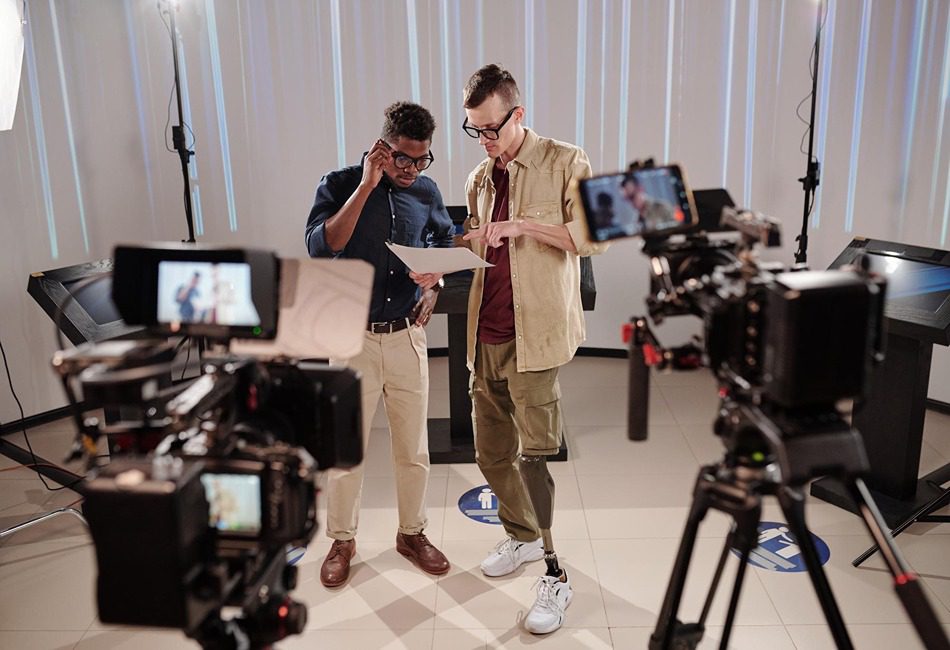
Disabilities come in all shapes and sizes. Account for all necessary limitations before the start of filming. Photo credit: Freepik
Understanding ADA Standards for Accessible Design
ADA standards for film locations are about more than just legal rules—they’re about making sure people can comfortably function on set. Here are a few key ADA facilities to look for when setting up or scouting accessible filming locations for your next project:
- Ramps: Wheelchair users, mobility aids and moving crews all benefit from ramps.
- Elevators: Essential for multi-level filming locations, elevators help everyone save time when moving up and down without the risk of injury.
- Clear Signage: Signs should be placed throughout your film set for everyone, including the visually impaired, to communicate, follow directions and avoid potential safety hazards.

Wheelchair ramps and elevators make film sets safe and easily navigable. Photo credit: Freepik
ADA accessible film sets are not just a recommendation for filmmakers—they are the law. The 2010 ADA Standards for Accessible Design spell out what’s required. A few examples of updates on film set destinations include:
- Paths of travel
- Dispersion of wheelchair spaces and companion seating locations
- Application of standards to fixed elements
- Dimension guidelines for adults and children
- Scoping and technical requirements
- Installation and alterations of visible alarms
- Extended parking spaces
- Room and door size requirements
- Drinking fountain availability
- Accessibility of dressing, fitting and locker rooms

Discuss accessibility needs beforehand to ensure a smooth production process for everyone. Photo credit: Freepik
Benefits of Choosing ADA-Ready Locations
Having a safe set decreases the costly and sometimes fatal risks of physical injury on set. However, ensuring your crew is protected has many other social and ethical benefits—it promotes representation for everyone involved in the project.
- Inclusivity: Representation matters on-screen and off. Projects like Love on the Spectrum and Creed III prove audiences are receptive to more inclusive stories of those with disabilities, and this inclusion must start behind the scenes with accessible film production. This begins with ADA-compliant filming locations that allow everyone from all walks of life to flaunt their skills and talents. When your area is accessible, it sends the message that everyone is welcome, and that can open doors to new talent, diverse stories and bigger audiences.
- Expense: From a practical side, ADA-ready locations save creatives time and money. Trying to retrofit a space after selecting it can cost a fortune and delay your shoot. Filmmakers don’t have to worry about retrofitting their equipment, props or film spaces. For example, wheelchair-accessible filming locations often come with additional hidden perks such as more space for gear, easier loading strategies and more efficient setups.
- Good PR: Film buffs and creative enthusiasts desire projects representing their core values. With more inclusive film environments and diversity, budgets are open for many filmmakers and production companies to continue these beneficial efforts. That, in turn, promotes films and the actors and crew who made them success.
Scouting ADA-Compliant Filming Locations
The best time to think about accessibility is before the first shoot day. If you’re eyeing a few film locations, schedule a walk-through with some of these general but important questions to determine whether a location is ADA-approved, such as:
- Are entrances, restrooms and wheelchair ramps accessible?
- Are the signs in your film location easy to understand?
- Are there any pesky barriers for cast, crew and visitors, like tight hallways or a lack of changing facilities?
- What’s the parking situation like for people with mobility aids?
- Where are the fire escapes?
- Are vital safety inspections, such as gas and mold, up to date?
- Are doors wide enough to transport equipment comfortably?
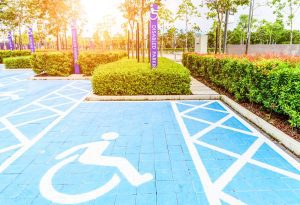
Handicap parking offers ample space for vehicles to load and unload specialized equipment. Photo credit: Freepik
Having a professional search for locations that meet all ADA requirements for filming is the best way to ensure you are filming in a safe location. When you’re doing ADA location scouting, reach out to local film offices or commissions. Many have pre-approved lists of ADA-compliant filming locations that are camera-ready. You can also search online for databases.
Additionally, ask property managers about their past productions. Have they hosted crews with accessibility needs? If so, what worked and what didn’t? Document everything. Your goal isn’t just to meet legal minimums—it’s to create an accessible film set where people feel respected and protected. Remember, it is up to you to ensure you have a safe space to film.
Case Studies: Successful Productions in ADA-Compliant Filming Locations
There are plenty of examples of productions doing it right. ABC’s Speechless didn’t stop at casting actors with disabilities. It built an entire ADA accessible film set to support those actors and crew members.
Phoebe-Rae Taylor, an actress in 2024’s Out of My Mind who uses a wheelchair throughout the movie, is an example of a film set that had to prioritize accessibility when selecting a location. The crew noted that the experience was “eye-opening”—to be put in the perspective of someone with physical disabilities, from fitting through doorways to determining the best angle for her ramp.
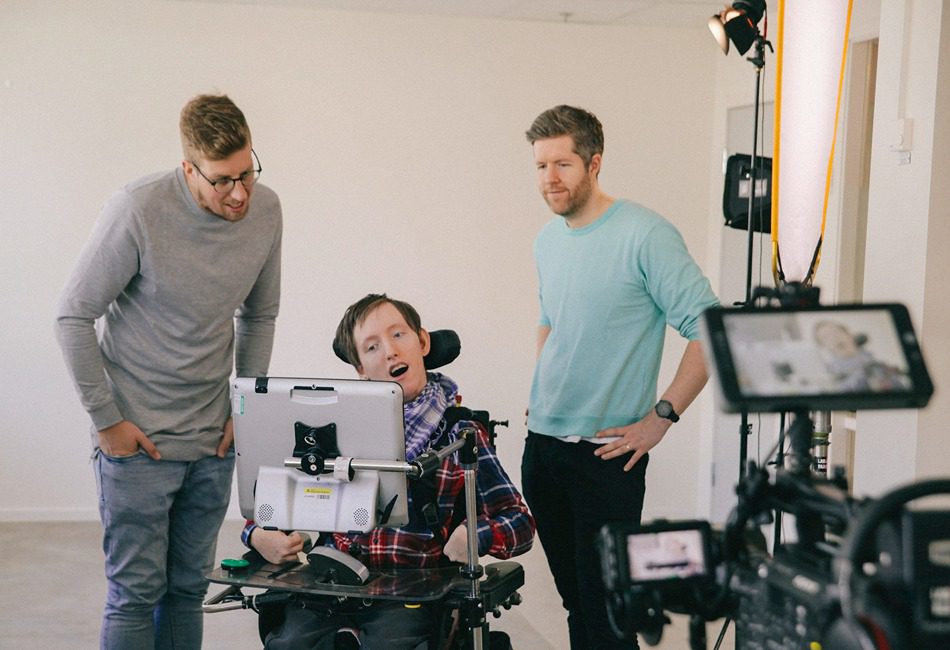
Accessible filmmaking. Photo credit: Vanilla Bear Films/Unsplash
In 2018, Jennifer Brea, director, writer and producer of the documentary Unrest, shared with the Disability Visibility Project’s podcast (Episode 16: Disabled Filmmakers) stories about having a disability and reminders to the film community about how to be inclusive to those with disabilities.
Brea said, “When I hear ‘rustic,’ I see stairs and gravel paths, and gee, we’re gonna do canoeing as a community-building exercise. And I’m thinking, well, maybe we could put some pontoons on my wheelchair—but you gotta think about me now. Because I’m coming next year. You gotta get on this.”
In addition to choosing an ADA-compliant filming location, it is vital to innovate ways for everyone to participate. While having ADA-accessible film sets and networking locations helps people with disabilities, Brea also encourages those with disabilities to explore the many different options when it comes to filmmaking.
“I think we live in a time now where the world is much more receptive, and the technology that exists allows you to make films in ways that maybe you could never make before. I was bedridden through almost all of production and directed using Skype and remote feeds and every technological hack I could find.”
With these examples, it is essential to remember that all successful films compliant with ADA regulations had accessibility determined pre-production rather than during filming. They were chosen with professional consultants or coordinators and had an informed staff trained to recognize and practice safe and responsible filming.
Accessible filming locations should be prioritized, not compromised.
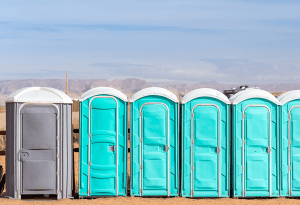
Port-a-potties can accommodate handicapable people. Photo credit: Canva
Accessibility Challenges and Solutions
ADA standards for film locations have improved over the decades. However, many locations weren’t built with the ADA in mind. Historic buildings, old warehouses—even rugged outdoor spots for scenes set in the tranquility of nature—all come with challenges. If you have your eyes set on the perfect setting for your film, take matters into your own hands with these ADA workarounds:
- Budget for temporary ramps, modular signage and portable lifts.
- Purchase on-site mobile ADA restrooms.
- Ask yourself: Is this space worth the hassle, or can you find a better, more accessible film production match?
When planning early, you have options, and that flexibility pays off. The extra effort during ADA location scouting means fewer surprises on shoot day and a safer environment for everyone.
Embracing Accessibility as a Standard Practice
It’s time for filmmakers to recognize their privilege and start thinking about accessibility as more than an afterthought or a luxury. Just like lighting, blocking or camera movement, ADA compliance in film production should be a given and is just another fundamental part of running a safe, ethical and productive film set.
After all, you don’t want to liken your film to the chaos that happened during the 1939The Wizard of Oz set, like its fake snow with mesothelioma-causing asbestos, actors ingesting toxic aluminum dust, rubber prosthetic masks leaving scars, and near-permanent green makeup?
When you make ADA-compliant filming locations part of your standard workflow, everyone benefits. Teams feel valued, stories are more authentic, and your production becomes a place where people can thrive and create regardless of ability. Accessible film production and accessible film sets aren’t just the future—they’re the present. Let’s make them the norm.
By Kendall Perry, Contributing Writer

